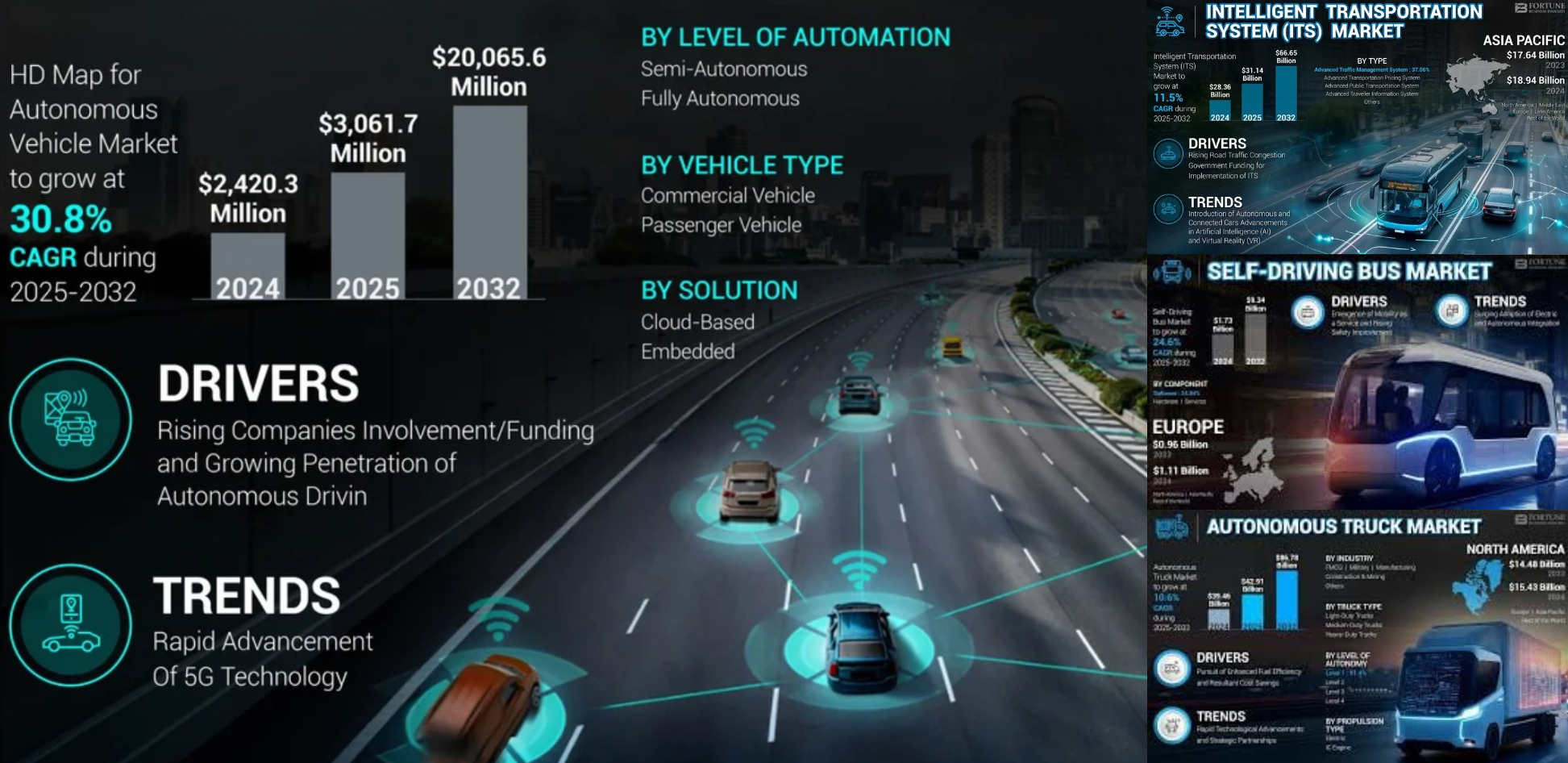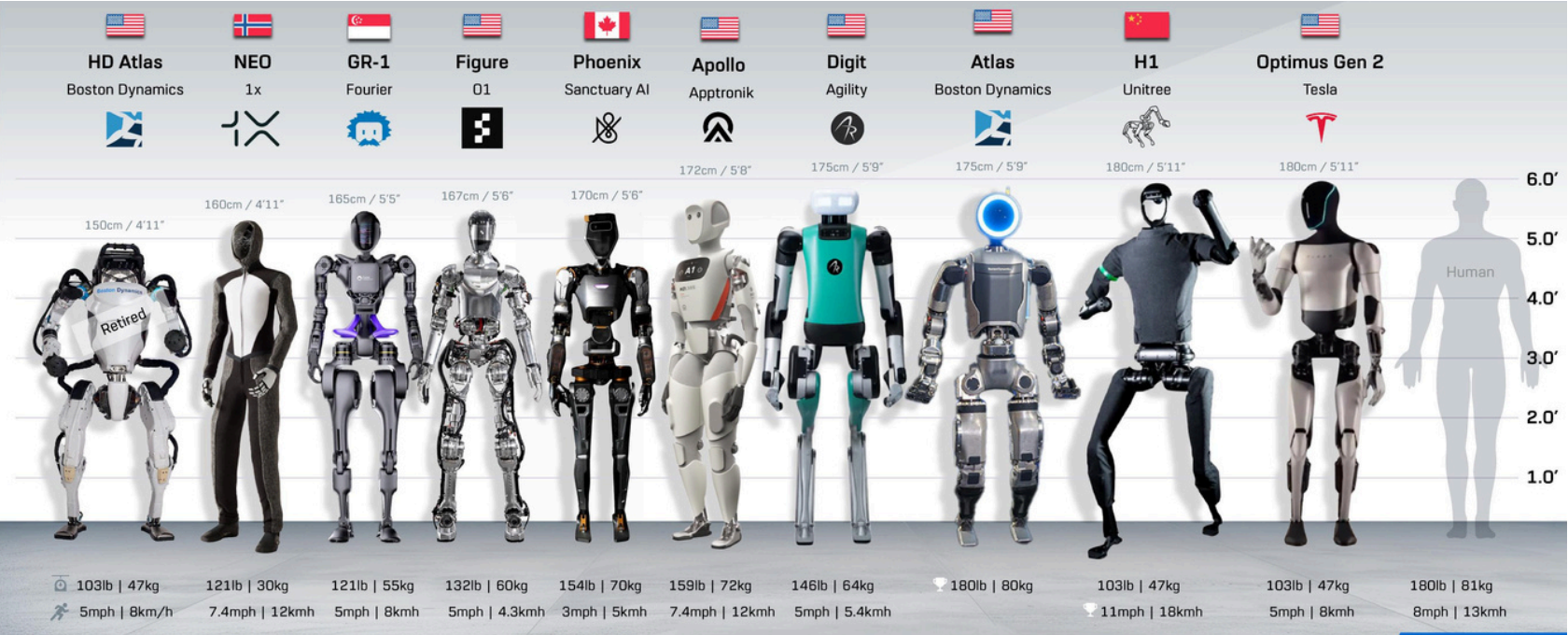Rise of the machines! How smart robots could be your smartest investment yet
While the market fixates on AI chatbots and digital marvels, a quieter revolution is brewing in the practical application of AI in Robotics and Automation.
Sure, generative AI has captured headlines, but it’s the physical side of this tech wave—robotics and automation—that’s tackling real-world challenges like labour shortages, ageing populations, and surging demand.
With venture capital pouring $6 billion into the sector in H1 2025 and whispers of trillion-dollar markets by 2035, this isn’t just hype; it’s a golden opportunity. Excuse the pun, but we see robotics as AI’s “arms and legs,” evolving from factory floors to everyday life.
Recent forecasts from ABI Research peg the mobile robot market at US$30 billion in 2025, growing at a 16.5% CAGR to US$75 billion in the coming years. Meanwhile, the global robotics market is valued at $73.64 billion this year, per Mordor Intelligence.
In this wire, we’ll spotlight four key areas driving this surge: the enablers, logistics, automation and co-bots/humanoid robots.

Broad Winners: The Enablers Powering It All
Let’s start at the foundation. The robotics boom needs robust ecosystems—think autonomous tech and the chips that make it tick. We believe the difference this time is AI’s integration, turning rigid machines into adaptive powerhouses.
Take the total addressable market (TAM): forecasts show fully self-driving transport alone hitting $2-2.3 trillion by 2030, with a 38% CAGR, per recent industry reports. But zoom out—the overall robotics market could more than double from $71.78 billion in 2025, according to Nasdaq analyses. This growth is fuelled by AI-driven autonomy, where edge computing enables real-time decisions in unstructured environments.
Tesla (NASDAQ: TSLA) leads here with its Full Self-Driving (FSD) software and Robotaxi ambitions. Cybertaxis are cruising California streets, and with regulatory tailwinds in the US and China, we’re betting on Musk’s vision for fleets scaling to millions. Many have optimistic 2030 price targets of above $1,000 and buying at $450 is like the investing equivalent of a “trust fall”, but Elon has a history of industry changing innovation, so if you were ever going to back someone, it's him.
Tesla’s data moat from its EV fleet gives it an edge in autonomy. Tesla has over 6 billion miles of FSD data, with second place a distant half a billion. Not to mention the companies new patent for “unboxed” manufacturing, hopefully bringing down manufacturing costs of the Cybertaxi by 40%-50% TSLA remains a broad winner for those playing the long game.
On the chip side, Taiwan Semiconductors (NYSE: TSM) is the unsung hero, fabricating the advanced nodes for edge AI in robots.
Projections? A 25% CAGR in related revenues, tapping a $37 billion humanoid TAM by 2030. Competition from Intel is real, but TSMC’s foundry dominance justifies its premium. These broad winners offer diversified exposure—TSLA for application, TSMC for infrastructure—amid a sector where AI enablers could add trillions in value.
If you’re coming to this late, consider the semiconductor angle: TSMC’s partnerships in co-bots and machine vision are quietly powering the next wave.

Logistics: The Heartbeat of Efficiency Gains
Now, zoom in on logistics and manufacturing, driven by e-commerce and Industry 4.0. Logistics and manufacturing are the heartbeat of global trade, and AI robotics are revolutionising efficiency. The TAM here is $94-103 billion in 2025, surging to $114-361 billion by 2030 at a 19-45% CAGR, fuelled by e-commerce and Industry 4.0.
Imagine Amazon’s Seattle warehouses: robotic arms zip through aisles, picking orders in seconds, while AI optimises routes to cut delivery times. This isn’t sci-fi—it’s happening now, addressing supply chain snarls amid tariff-driven disruptions.
Teradyne’s (NASDAQ: TER) Universal Robots deploy collaborative arms that work alongside humans, assembling car parts in Volvo’s Gothenburg plant with pinpoint precision. These cobots use AI-driven sensors to adapt to tasks like welding or screw-driving, boosting output while keeping workers safe.
Meanwhile, (Symbotic’s NYSE: SYM) AI systems orchestrate entire warehouses, with robots stacking pallets in Walmart’s Arkansas hubs or sorting inventory for Target. These autonomous mobile robots (AMRs) navigate dynamically, using machine vision to avoid obstacles and optimise storage.
By 2035, this sector’s TAM could hit $542-852 billion as e-commerce grows 20% YoY and labour costs climb. Supply chain “whack-a-mole” from trade tensions only accelerates adoption, with automation slashing waste by 20-30%.

Automation: Precision in Healthcare and Beyond
Automation is transforming specialised fields like healthcare and agriculture, where AI delivers precision amid chronic needs. Healthcare’s TAM is $18 billion today, rocketing to $115 billion by 2030 at a 44% CAGR, blending robotic surgery with digital twins. Agriculture’s TAM grows from $13-14 billion to $48 billion at 29% CAGR, driven by food security. Roots Analysis projects overall robotics at $76 billion by 2026.
In healthcare, Intuitive Surgical’s (NYSE: ISRG) da Vinci systems are game-changers. These robotic platforms, equipped with AI-enhanced imaging, allow surgeons to perform minimally invasive procedures with micron-level accuracy, reducing recovery times for patients undergoing heart or prostate surgeries.
The da Vinci 5, launched recently, integrates AI to personalize surgical plans, boosting outcomes in hospitals worldwide. Digital twins—virtual models of organs or patients—further amplify this, enabling real-time simulations for drug trials or treatment planning.
In agriculture, Deere & Company’s (NASDAQ: DE) See & Spray tractors use computer vision to target weeds, spraying herbicides only where needed, cutting chemical use by up to 90%.
Autonomous sprayers and drones, like those from Deere’s acquisitions (Blue River Technology, GUSS Automation), navigate fields to optimise crop yields, addressing labor gaps as global food demand rises.
By 2035, these markets could explode, with healthcare robotics alone potentially reaching $719 billion in optimistic scenarios.

Co-Bots and Humanoids: Versatility Meets the Future
Finally, the exciting frontier: collaborative bots (co-bots) and humanoids, offering adaptability across roles. TAM: $10 billion today, $21-37 billion by 2030 at 24% CAGR, potentially $60-212 billion by 2035 as AI matures. Co-bots are estimated at $3.38 billion by 2030, CAGR 18.9% as the sector addresses a $20 trillion labour market, with pilots smoothing ethical uncertainties.
Tesla’s Optimus prototypes are stealing the show, handing tools in Fremont factories and aiming for versatile roles like warehouse picking or eldercare. With AI-driven dexterity, Optimus mimics human movements, learning tasks via reinforcement learning.
Symbotic’s AI-powered arms, deployed in Denmark and New York, adapt to dynamic warehouse tasks, from packing to sorting. These robots use no-code AI programming, making them accessible to small businesses.
By 2030, humanoids could scale to millions of units, replacing repetitive jobs and addressing labour shortages. Ethical concerns persist, but pilots are smoothing the path.

At MPC Markets, we view AI robotics as a potential super-cycle, akin to EVs on steroids. Our top picks: TSLA for broad exposure, SYM for logistics fireworks, ISRG for healthcare precision, and DE for ag resilience.
For ASX, your single stock choices are largely non-existent, however you can gain exposure through Betashare Global Robotics and Artificial Intelligence ETF (ASX: RBTZ), which invests globally in companies involved with robotics, automation, and artificial intelligence and also Global X Autonomous & Electric Vehicles ETF (ASX: DRIV), while not a pure robotics or automation ETF but overlaps with those themes through exposure to smart mobility and emerging automotive technologies.
MPC Markets has an upcoming webinar on the 4th of November on investing in the AI Robotics and Automation space, you can register here.
5 topics
8 stocks mentioned
2 funds mentioned

